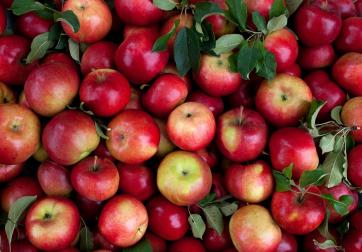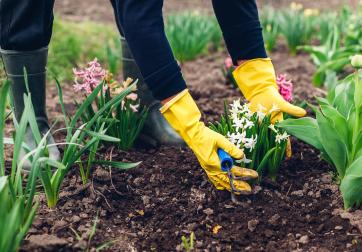The temperatures continue to drop as snow drifts toward the frozen ground. As you peer out the window at the once fruitful garden now dressed in white, you think wouldn’t it be nice to sink your teeth into a delicious red tomato? The tomato is not the bland hard season store-bought kind, but a natural homegrown juicy red tomato.
Today, tomato cultivars are easy to grow indoors during the winter months, such as Sweet Valentine, Pixie, Patio, Toy Boy, Small Fry, Tiny Tim, etc. Dwarf tomatoes may not have the large size many of us desire, but they will satisfy the craving for the delicious taste.
For an indoor tomato garden, you will need seeds, one six to twelve-inch container with drainage holes, a dish to catch excess water, starter or high-quality potting soil, a southern window with good sunlight, water, fertilizer, and quarter-inch plant stakes. Since you are gardening indoors, you don’t have to worry about pesticides. Your container should be clean and free of toxic products that would be harmful to the tomato or the people who consume them. If you discover that the plants are not getting enough sunlight, you may use a grow light.
Plant tomato seeds about one-fourth inch deep and water. Keep soil moist but not soggy. The seeds may “dampen off” due to fungal infection and die if the soil is too wet. The seeds should germinate in approximately five to ten days and may be transplanted to a larger container when the seedlings are three inches tall. If you are not anticipating transplanting seedlings, be sure the container is large enough for a mature tomato plant. You will remove all but one or two seedlings. You may fertilize regularly about two weeks after transplanting. Turn the container regularly, so all sides of the plant get the same amount of sunlight. When the plants bloom, you may become the surrogate bee by gently shaking the branches, allowing pollen to fall from one flower to the other. Now you wait for the fruit to grow and mature.
There are three ways to tell when your tomato is ripe.
The smell test: A ripe tomato has a fresh garden aroma different from an unripe tomato.
The squeeze test: Give the tomato a gentle squeeze, the ripe tomato will feel soft but not mushy, and an unripe tomato will be hard.
The weight test: A ripe tomato will be heavier than an unripe tomato.
Excuse my drool. I can taste those tomatoes already!
National Garden Clubs, Inc. is a 501(c)(3) organization that aims to promote the love of gardening, floral design, and civic and environmental responsibility. There is a local club near you, click here to find one and join. Subscribe to the NGC’s blog by entering your e-mail here. You will receive an e-mail when there is a new blog article on the NGC website. You do not have to be an NGC member to subscribe.
3 Comments
gardener
Hi Donna, when the seed package says 'X__ number of days until maturity' is that from the time you plant the seed or from the time the seedling plant first appears? Thanks Janine
Post Author
Maturity is from the time you plant seeds in the container. Have fun watching your tomato plants grow!
TOMATES DE INVIERNO
ME ENCANTO LO DE CONVERTIRME EN ABEJA SUSTITUTA CON LA PLANTA DE TOMATE
MIL GRACIAS POR ESA IDEA

 Board Member Login
Board Member Login Our Store
Our Store Blog
Blog





